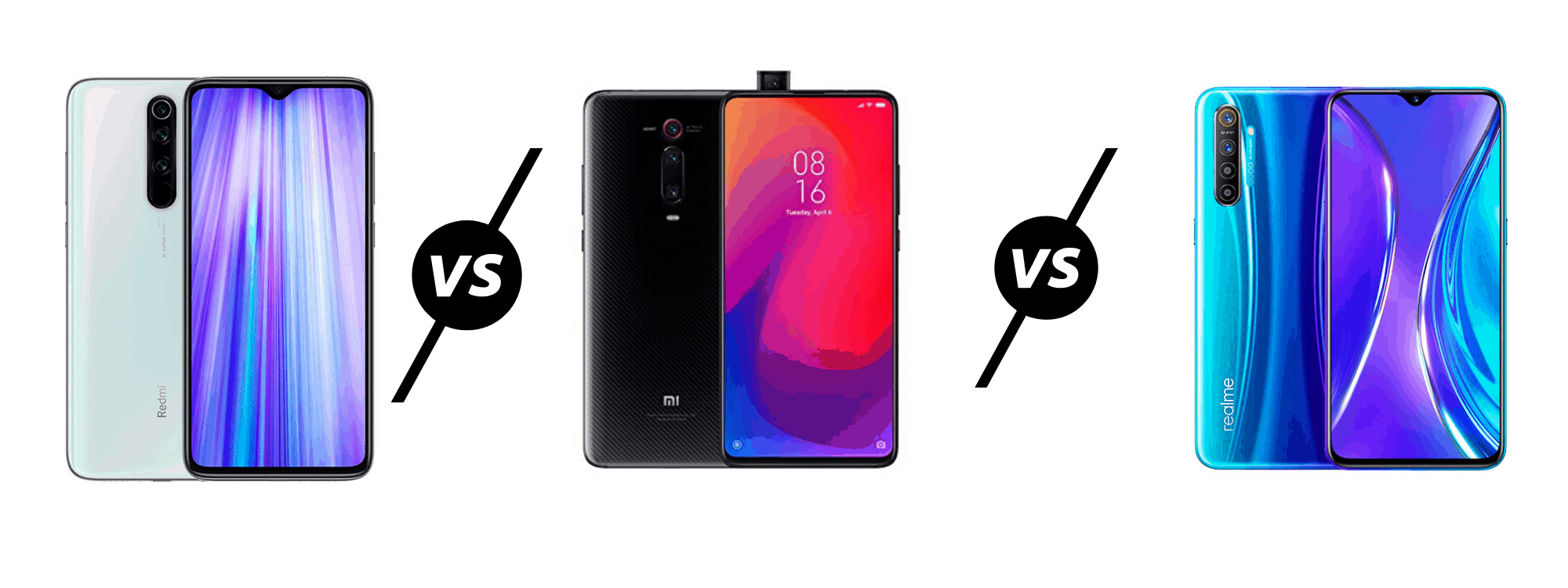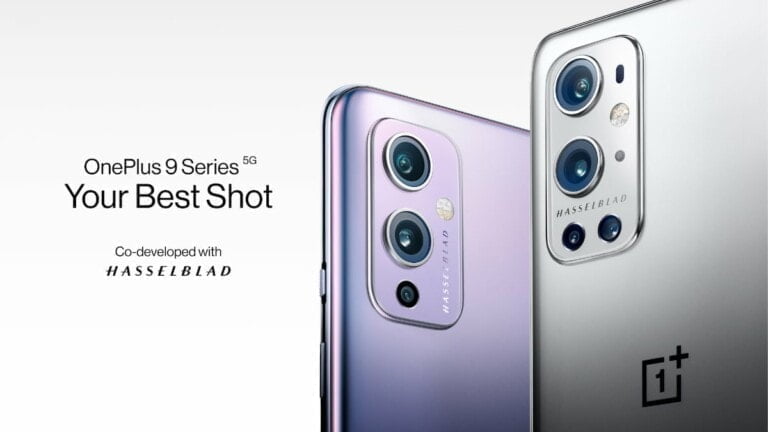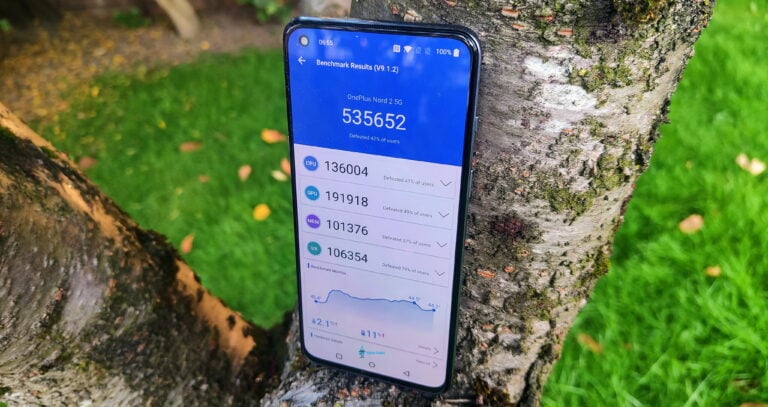Any links to online stores should be assumed to be affiliates. The company or PR agency provides all or most review samples. They have no control over my content, and I provide my honest opinion.
I have been waxing lyrical about Realme recently and how they offer unparalleled value for money with their recent launches, in particular, the Realme X2 Pro. Though this is not entirely accurate, the value king has been Xiaomi for several years now, and while Xiaomi doesn’t have something to compete directly with the X2 Pro yet, they do fair well in the mid-range market.
There are currently three notable phones that all fall well under £300, the recently launched Xiaomi Redmi Note 8 Pro and Realme X2 and the popular Xiaomi Mi 9T.
So how do these three exceptionally priced phones compare to each other?
Related Content
Pricing and other options
I am not sure if Xiaomi Redmi Note 8 Pro has not had an official EU launch yet, so a price comparison could be a little inaccurate. One Amazon UK it is available via Prime for as little as £250 for the 6GB/64GB model. Amazon Spain has the 6GB/128GB model for 278-Euros which is £240 or opting for a grey import site such as eGlobal can get the phone for as low as £199 for 6GB/128GB.
The Xiaomi Mi 9T has been officially released in the EU, with the Remi K20 being the Chinese model. You will save money going via the official Amazon Spain channel where it will cost about £254 for 6GB/64GB.
Finally, the Realme X2, via Amazon Spain, will set you back £258 for 8GB and 128GB.
So if you chose to use Amazon Spain, I would regard the Redmi Note 8 Pro and Realme X2 as the same price when you factor in memory/storage while the Mi 9T is a tad more expensive overall.
If you want to look at other sub £300 phones, possible options include:
- Xiaomi Pocophone F1 – last years affordable flagship a Snapdragon 845, 6GB/128GB
- Samsung Galaxy A50 – Exynos 9610, 25MP/8MP ultrawide/5MP TOF, 4GB/128GB
- Samsung Galaxy M30s – Exynos 9611, 6GB/128GB, 48 MP/8MP ultrawide/5MP TOF, 6000mAH battery
- Motorola Moto G7 Plus – Snapdragon 636, 4GB/64GB, 16MP rear camera
- Huawei P30 Lite – Kirin 710, 4GB/128GB, 48MP/8MP/2MP, 3340mAH
Out of those choices, it would be the Samsung Galaxy M30s I would choose as it is just £229, and could be a worthy contender to the Xiaomi/Realme options in this post.
Chipset, RAM and Memory
The Xiaomi Mi 9T uses the Snapdragon 730 chipset, but the Realme X2 has the 730G which uses slightly higher clocks and claims to offer 15% faster graphics rendering over the Snapdragon 730.
The Xiaomi Redmi Note 8 Pro uses the Mediatek Helio G90T which has a very similar specification to the Snapdragon 730G and should offer almost identical real-world performance. It is however made on a 12nm fabrication process vs 8nm so it will likely be less efficient with its battery.
The Realme X2 comes with one model choice in the EU with 8GB of RAM and 128GB of storage, which can be upgraded via microSD.
The Xiaomi Redmi Note 8 Pro starts from 6GB/64GB and goes up to 8GB and 128GB, but it loos like the 6GB/128GB or 6GB/64GB are the main choices currently available. This also can be upgraded via microSD.
Xiaomi Mi 9T again has 6GB/64GB or 6GB/128GB choices, but can not be upgraded via microSD.
Camera

The Xiaomi Redmi Note 8 Pro and Realme X2 have an identical rear camera set-up with a 64MP primary lens, then 8MP ultrawide, 2MP macro, and 2MP depth sensor.
I would personally class the Xiaomi Mi 9T as having a superior camera spec with 48MP as the main, but then an 8MP telephoto with 2x optical zoom and a 13MP ultrawide. I doubt the 48MP lens will produce much worse results than 64MP, but the telephoto and improved ultrawide will yield better results overall.
The Xiaomi Mi 9T has a pop-up camera which therefore means you don’t have an ugly notch on your display, the lens on this is 20MP and matches the Redmi Note 8 Pro.
The Realme X2 has a 32 MP f/2.0 selfie camera.
Battery & Charging
The Xiaomi Redmi Note 8 Pro has a monster 4500mAh battery, possibly to make up for its inefficient chipset, this can then be charged via 18W fast charging. While I can’t confirm it, I would guess it would offer similar screen on time to the other two phones, possible a little better, but I doubt it will be much.
Both the Mi 9T and Realme have a 4000mAh battery, the Mi 9T matches the charging of the Redmi Note 8 Pro with 18W, but the Realme X2 has 30W charging which can do 67% in 30 min.
None of them has wireless charging.
Other Features

All three phones use an under-display fingerprint sensor, they all have NFC, and they all have a 3.5mm headphone jack.
Both the Mi 9T and X2 have a 6.4-inch AMOLED display, but the Mi 9T has no notch. The Redmi uses a larger 6.53 inch IPS display.
From what I can tell, none of them has an official IP rating for water/dust protection.
Xiaomi uses MIUI 10 and Realme has ColorOS 6. They are both on Android Pie, and both have Android 10 upgrade plans.
The Xiaomi Mi 9T uses an aluminium frame, while the X2 has plastic. This adds weight to the Mi 9T but gives it a more pleasant premium feel. I can’t confirm the construction of the Redmi, but they all have a glass front and back.
Which is best overall?
I couldn’t honestly say. It is a close call in terms of spec. The Xiaomi Mi 9T costs the most, but I think the camera should be more versatile than the other two options, its chipset will lag behind the other two slightly, so if prefer gaming over photography it is worth considering.
At least in terms of specification to price ratio, I would say the Realme X2 has the slight edge overall. I have not used the Redmi, but the X2 has an AMOLED display and ultra-fast charging. I suspect the chipset used in the Redmi will result in very similar battery performance between the two phones even though it uses a larger 4500mAh battery.
Xiaomi Redmi Note 8 Pro vs Xiaomi Mi 9T vs Realme X2 Comparison Table
| Xiaomi Redmi Note 8 Pro | Xiaomi Mi 9T | Realme X2 | |
|---|---|---|---|
| Announced | 2019, August | 2019, June | 2019, September |
| Dimensions | 161.4 x 76.4 x 8.8 mm (6.35 x 3.01 x 0.35 in) | 156.7 x 74.3 x 8.8 mm (6.17 x 2.93 x 0.35 in) | 158.7 x 75.2 x 8.6 mm (6.25 x 2.96 x 0.34 in) |
| Weight | 200 g (7.05 oz) | 191 g (6.74 oz) | 182 g (6.42 oz) |
| Build | Front/back glass (Gorilla Glass 5) | Front/back glass, aluminum frame | Front/back glass (Gorilla Glass 5), plastic frame |
| SIM | Hybrid Dual SIM (Nano-SIM, dual stand-by) | Dual SIM (Nano-SIM, dual stand-by) | Dual SIM (Nano-SIM, dual stand-by) |
| Type | IPS LCD capacitive touchscreen, 16M colors | AMOLED capacitive touchscreen, 16M colors | Super AMOLED capacitive touchscreen, 16M colors |
| Size | 6.53 inches, 104.7 cm2 (~84.9% screen-to-body ratio) | 6.39 inches, 100.2 cm2 (~86.1% screen-to-body ratio) | 6.4 inches, 100.5 cm2 (~84.3% screen-to-body ratio) |
| Resolution | 1080 x 2340 pixels, 19.5:9 ratio (~395 ppi density) | 1080 x 2340 pixels, 19.5:9 ratio (~403 ppi density) | 1080 x 2340 pixels, 19.5:9 ratio (~403 ppi density) |
| Protection | Corning Gorilla Glass 5 | Corning Gorilla Glass 5 | Corning Gorilla Glass 5 |
| 500 nits max brightness | HDR | ||
| HDR | |||
| OS | Android 9.0 (Pie); MIUI 10 | Android 9.0 (Pie); MIUI 10 | Android 9.0 (Pie), planned upgrade to Android 10.0; ColorOS 6 |
| Chipset | Mediatek Helio G90T (12nm) | Qualcomm SDM730 Snapdragon 730 (8 nm) | Qualcomm SDM730 Snapdragon 730G (8 nm) |
| CPU | Octa-core (2x2.05 GHz Cortex-A76 & 6x2.0 GHz Cortex-A55) | Octa-core (2x2.2 GHz Kryo 470 Gold & 6x1.8 GHz Kryo 470 Silver) | Octa-core (2x2.2 GHz Kryo 470 Gold & 6x1.8 GHz Kryo 470 Silver) |
| GPU | Mali-G76 MC4 | Adreno 618 | Adreno 618 |
| Card slot | microSD, up to 256 GB (uses shared SIM slot) | No | microSD, up to 256 GB (dedicated slot) |
| Internal | 64GB 6GB RAM, 128GB 6GB RAM, 128GB 8GB RAM | 64GB 6GB RAM, 128GB 6GB RAM | 64GB 6GB RAM, 128GB 6GB RAM, 128GB 8GB RAM, 256GB 8GB RAM |
| UFS2.1 | UFS2.1 | ||
| Rear Camera | 64 MP, f/1.9, 26mm (wide), 1/1.7", 0.8µm, PDAF | 48 MP, f/1.8, 26mm (wide), 1/2", 0.8µm, PDAF | 64 MP, f/1.8, (wide), 1/1.7", 0.8µm, PDAF |
| 8 MP, f/2.2, 13mm (ultrawide), 1/4", 1.12µm | 8 MP, f/2.4, 53mm (telephoto), 1/4", 1.12µm, PDAF, 2x optical zoom | 8 MP, f/2.3, 13mm (ultrawide), 1/4", 1.12µm | |
| 2 MP, f/2.4, 1/5", 1.75µm (dedicated macro camera) | 13 MP, f/2.4, 12mm (ultrawide), 1/3", 1.12µm | 2 MP, f/2.4, 1/5", 1.75µm (dedicated macro camera) | |
| 2 MP, f/2.4, 1/5", 1.75µm, depth sensor | 2 MP, f/2.4, 1/5", 1.75µm, depth sensor | ||
| Features | LED flash, HDR, panorama | Dual-LED flash, HDR, panorama | LED flash, HDR, panorama |
| Video | 2160p@30fps, 1080p@30/60/120fps, 720p@960fps, gyro-EIS | 2160p@30fps, 1080p@30/120/240fps, 1080p@960fps | 2160p@30fps, 1080p@30/60/120fps, 720p@960fps, gyro-EIS |
| Selfie | 20 MP, f/2.0, 0.9µm | Motorized pop-up 20 MP, f/2.2, 0.8µm | 32 MP, f/2.0 |
| Features | HDR, panorama | HDR | HDR |
| Video | 1080p@30fps | 1080p@30fps | 1080p@30fps |
| Loudspeaker | Yes | Yes | Yes |
| 3.5mm jack | Yes | Yes | Yes |
| Active noise cancellation with dedicated mic | 24-bit/192kHz audio | Dolby Atmos | |
| Active noise cancellation with dedicated mic | |||
| WLAN | Wi-Fi 802.11 a/b/g/n/ac, dual-band, Wi-Fi Direct, hotspot | Wi-Fi 802.11 a/b/g/n/ac, dual-band, Wi-Fi Direct, hotspot | Wi-Fi 802.11 a/b/g/n/ac, dual-band, Wi-Fi Direct, hotspot |
| Bluetooth | 5.0, A2DP, LE | 5.0, A2DP, LE, aptX HD | 5.0, A2DP, LE |
| GPS | Yes, with A-GPS, GLONASS, GALILEO, BDS | Yes, with A-GPS, GLONASS, GALILEO, BDS | Yes, with A-GPS, GLONASS, GALILEO, BDS |
| NFC | Yes | Yes | Yes |
| Infrared port | Yes | No | No |
| Radio | FM radio, recording | FM radio | FM radio |
| USB | 2.0, Type-C 1.0 reversible connector | 2.0, Type-C 1.0 reversible connector, USB On-The-Go | 2.0, Type-C 1.0 reversible connector |
| Sensors | Fingerprint (rear-mounted), accelerometer, gyro, proximity, compass | Fingerprint (under display, optical), accelerometer, gyro, proximity, compass | Fingerprint (under display, optical), accelerometer, gyro, proximity, compass |
| Battery | Non-removable Li-Po 4500 mAh battery | Non-removable Li-Po 4000 mAh battery | Non-removable Li-Po 4000 mAh battery |
| Charging | Fast battery charging 18W | Fast battery charging 18W | Fast battery charging 30W: 67% in 30 min (VOOC Flash Charge 4.0) |
| Colors | Black, Red, Blue, White | Carbon black, Red flame, Glacier blue | Pearl White, Pearl Blue |
| Price | £240 6GB/128GB Amazon Spain | £254 6GB/64GB via Amazon Spain | £258 8GB/128GB via Amazon Spain |
[content-egg-block template=offers_list]
I am James, a UK-based tech enthusiast and the Editor and Owner of Mighty Gadget, which I’ve proudly run since 2007. Passionate about all things technology, my expertise spans from computers and networking to mobile, wearables, and smart home devices.
As a fitness fanatic who loves running and cycling, I also have a keen interest in fitness-related technology, and I take every opportunity to cover this niche on my blog. My diverse interests allow me to bring a unique perspective to tech blogging, merging lifestyle, fitness, and the latest tech trends.
In my academic pursuits, I earned a BSc in Information Systems Design from UCLAN, before advancing my learning with a Master’s Degree in Computing. This advanced study also included Cisco CCNA accreditation, further demonstrating my commitment to understanding and staying ahead of the technology curve.
I’m proud to share that Vuelio has consistently ranked Mighty Gadget as one of the top technology blogs in the UK. With my dedication to technology and drive to share my insights, I aim to continue providing my readers with engaging and informative content.







